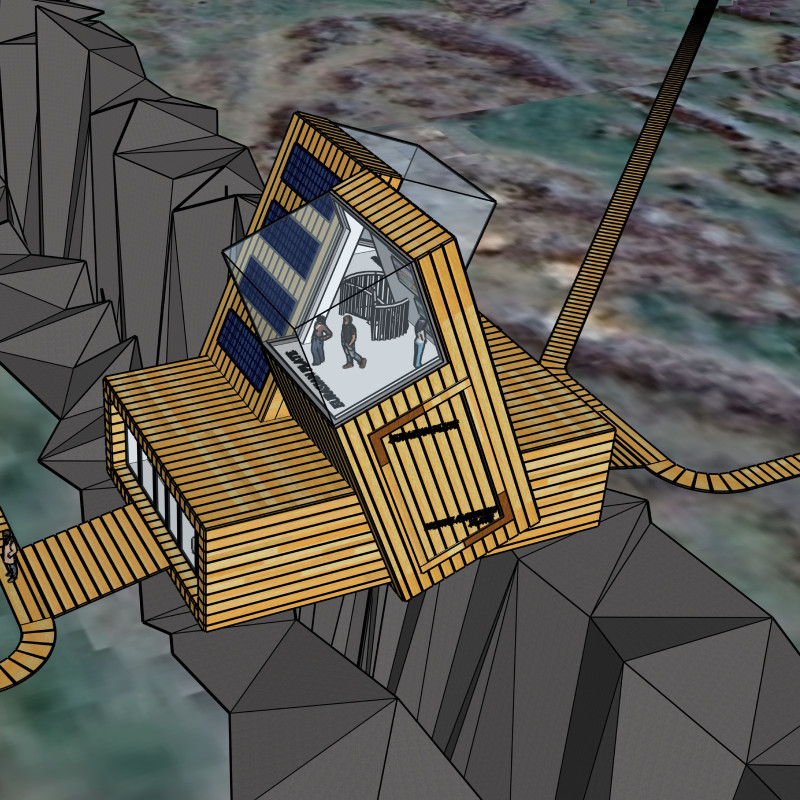5 key facts about this project
The Rock is situated at the meeting point of the North American and Eurasian tectonic plates in Iceland, designed to serve both as a viewing point and an educational space for visitors. The building aims to create a connection between the natural landscape and the people who explore it. The structure is designed to float above the ground, offering guests an opportunity to engage directly with the unique geological features of the area. The overall concept emphasizes immersion and understanding of the Icelandic terrain.
Design Concept
The design captures the essence of bridging two tectonic worlds. It features a building structure with sharp angles and a multifaceted facade. Two observation platforms are aligned to face their respective tectonic plate, using solid walls at the back to secure the viewing experience. Visitors are guided through the layout of the building, with elements that point naturally toward the significant geological features around them.
Accessibility Features
The ground floor is crafted with accessibility in mind. Key visitor facilities, such as an office, waiting area, and cafeteria, are conveniently located and accessible via a ramp. This choice helps to remove barriers often found with traditional staircases. The design prioritizes inclusivity, allowing a wide range of visitors to experience the space comfortably.
Sustainability Measures
An insulated envelope is incorporated to address the cold climate of Iceland. The project utilizes natural straw bale insulation, which aids in energy efficiency. A geothermal heating system takes advantage of local resources to maintain a comfortable temperature within the building. This focus on sustainability enhances the building's functionality while respecting the environment.
Structural Integrity
Features are included in the design to address safety concerns due to its location on tectonic boundaries. The foundation uses horizontal beams, which provide flexibility against seismic activity. Caisson foundations facilitate movement and maintain stability, allowing the building to withstand natural shifts in the ground.
The observation platform includes large windows that open up to wide views of the surrounding landscape. This design encourages visitors to appreciate the geological features of the site while interacting with exhibits related to tectonic activity.






















































